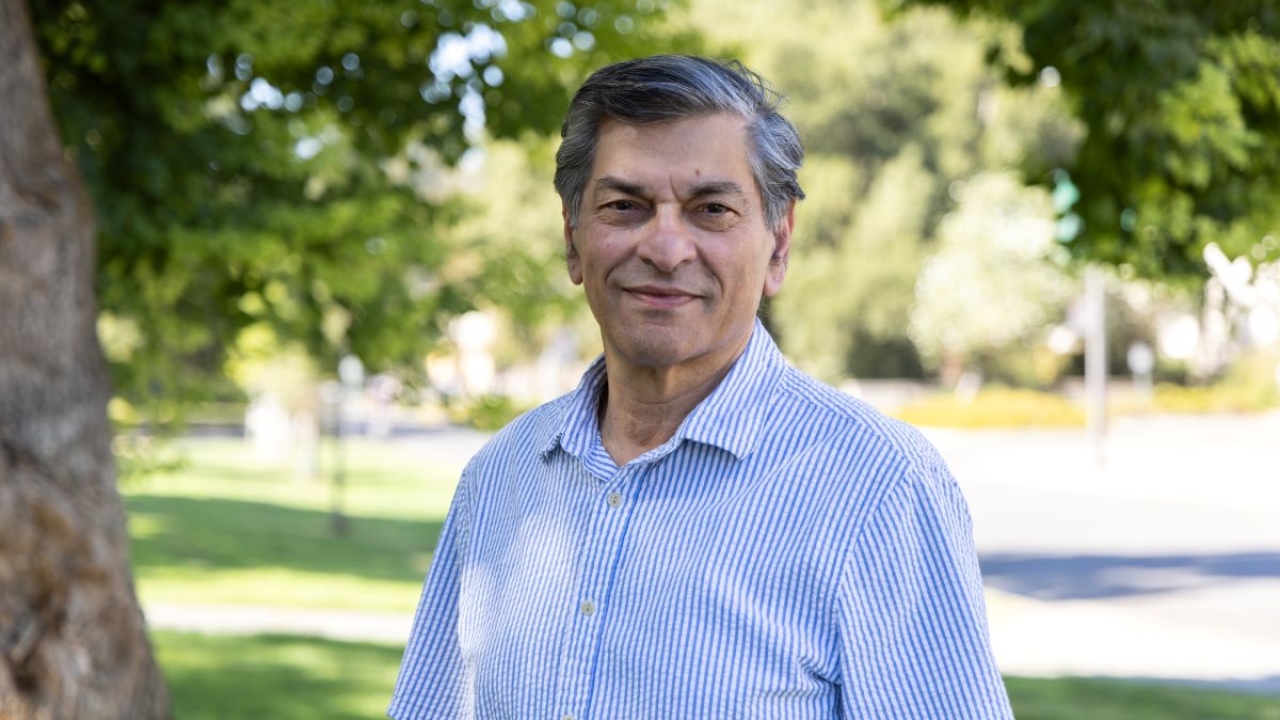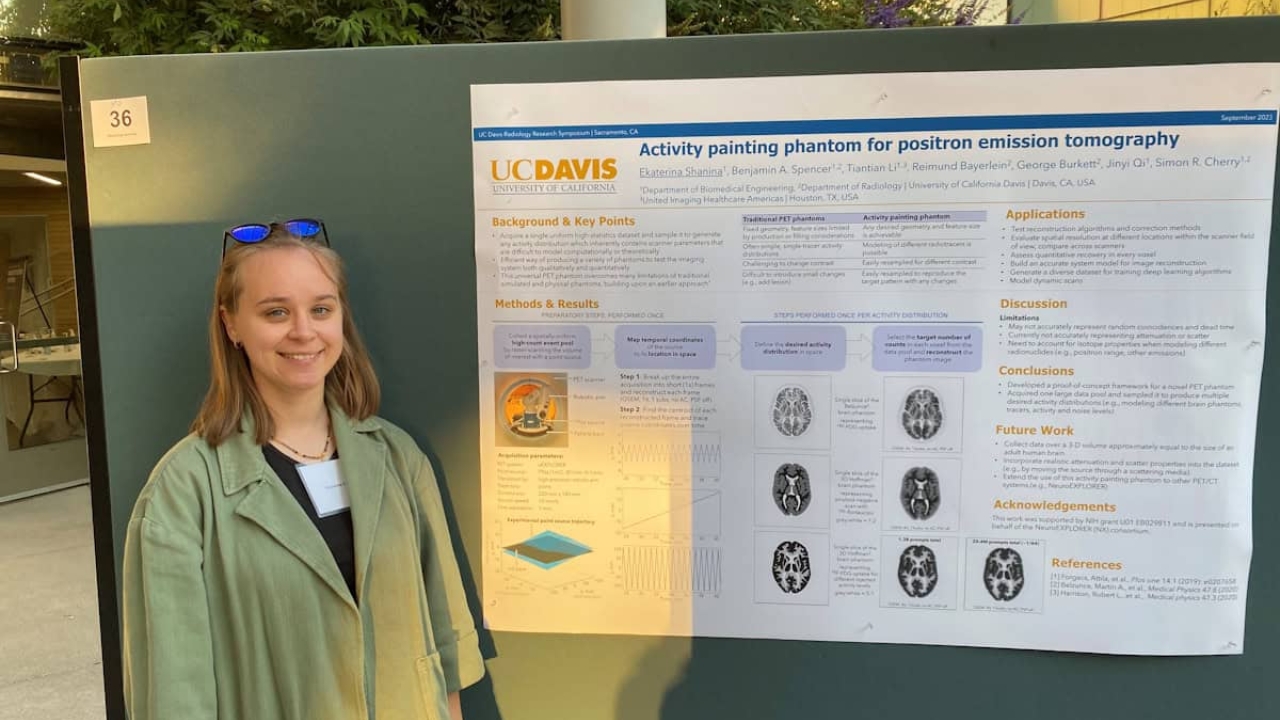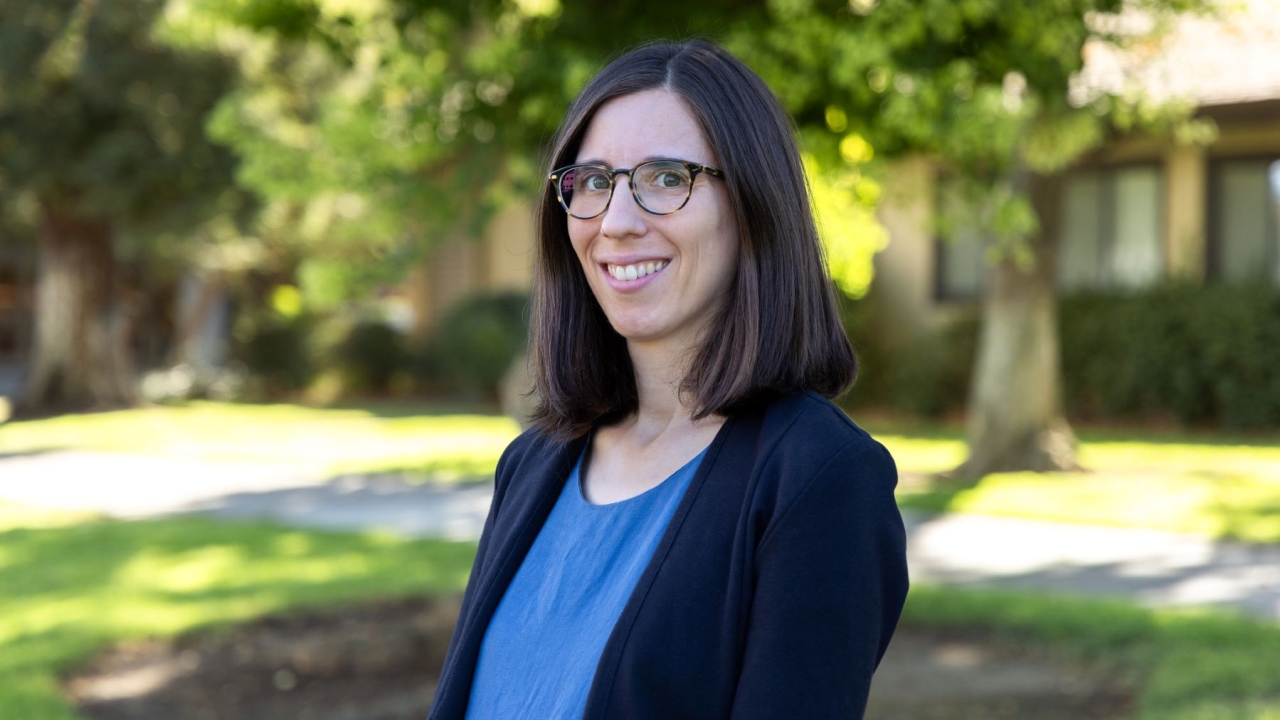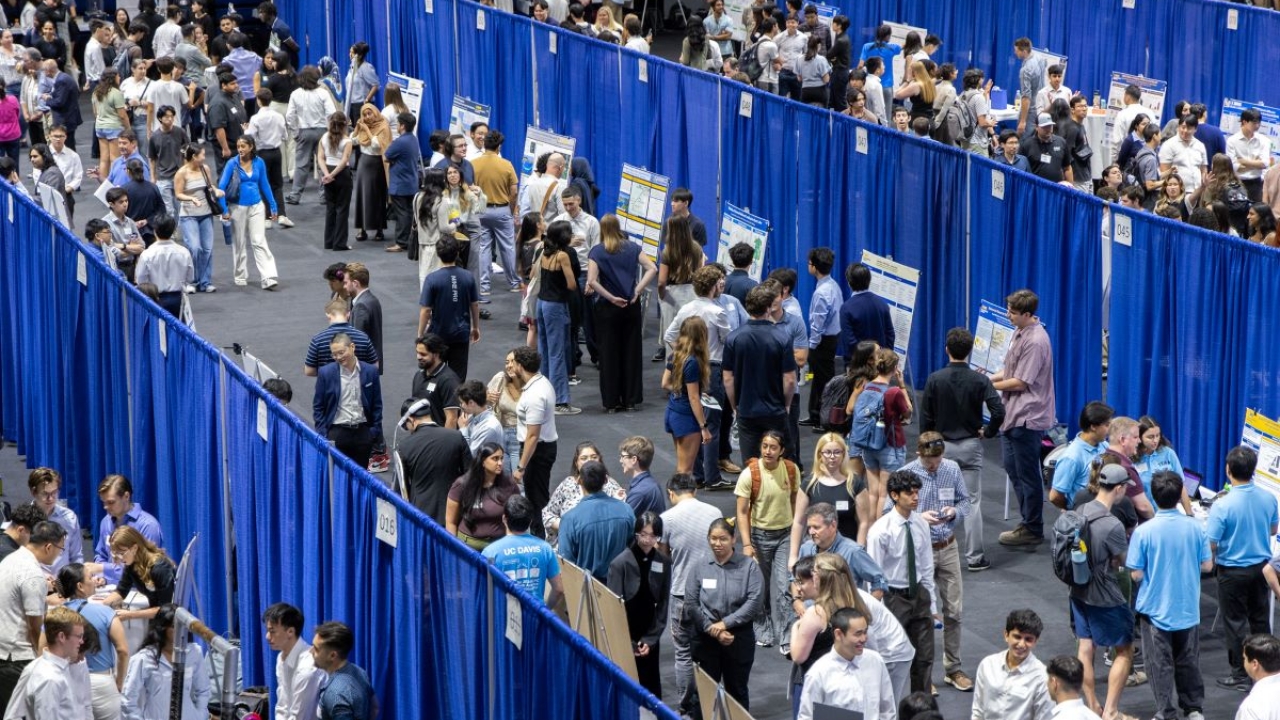Harvesting the Future: “Helper robots” are poised to help increase agricultural efficiency
Also published in Engineering Progress, Fall 2014
by Derrick Bang
California farmers frequently face a shortage of field workers. This situation is becoming increasingly dire each year, with vineyards and farmers leaving fruit unharvested in the field, due to the diminished number of pickers.

Until that trend reverses, the only solution involves increasing the efficiency of the available work force. Stavros Vougioukas, an assistant professor in the UC Davis Department of Biological and Agricultural Engineering, believes technology may help to solve the problem.
A native of Thessaloniki, Greece, Vougioukas arrived at UC Davis in 2012, after completing his doctorate in robotics and automation from New York’s Rensselaer Polytechnic Institute and several years in industry.
“California is the right place to be, and this is the right time, for work in agricultural robotics automation and mechanization. And Davis is the place to do such work; this department has a long tradition of agricultural mechanization. Everybody talks about the historic tomato harvester, but it goes much deeper than that. With respect to some of the work I’m doing now, I keep discovering applicable papers, tech reports and theses from the 1960s! The technology was different, of course, but even then UC Davis researchers had some of the same ideas.”
Last October, Vougioukas received a grant of $1,123,463 from the U.S. Department of Agriculture, to help fund a four-year project devoted to the development of what he terms “FRAIL-bots,” short for Fragile Crop Harvest-Aiding Mobile Robots. As envisioned by Vougioukas, these small machines will increase harvesting efficiency by (for example) reducing the “dead time” that results from the need to transport fruit-laden containers from deep within a field, to the field’s edge where storage vehicles wait.
“This USDA project is part of the National Robotics Initiative, which focuses on people and robots working together, whether in space, defense, manufacturing or agriculture,” Vougioukas explains. “My proposal lays the scientific and technical foundation for a human/robot collaboration.”
Vougioukas and his research team are concentrating on strawberry harvesting, which involves considerable wasted time when workers in the field are required to walk long distances to empty their containers, and then walk back to resume picking the fruit. Mindful that such a perishable crop must be harvested in a manner that ideally brings such “dead time” to zero, Vougioukas has developed small and relatively inexpensive robots that function as a courier service.
“The USDA proposal suggested a crew of 50 people and a fleet of five or six robots to transport the strawberries, with each robot serving more than one person. These would be intelligent, autonomous ‘smart’ machines.
“But we’re simultaneously exploring a slightly different concert: a much cheaper robot, not as smart, that would be specific to each worker. This robot would go back and forth only in that person’s furrow. You take that robot with you while picking; when it’s full, you push a button and it goes to the end of the furrow, where somebody unloads it, pushes another button and returns it to you. Meanwhile, you continue picking.
“We’ve already prototyped that one; a group of students in our department built a working model as a senior design project. This year, I’m collaborating with Kent Wilken, interim chair of the Department of Electrical and Computer Engineering; student teams of both electrical and mechanical engineers will develop a second version of that robot, as a cross-departmental senior design project.”
Vougioukas expects to have fully working prototypes of both sets of robots within the grant’s four-year term. “Whether they then can be commercialized is another story,” he admits, “but the strawberry industry definitely is interested, because economics favor precisely this sort of breakthrough.”

A second, related area of Vougioukas’ research involves much more ambitious robotic or mechanical harvesting from fruit trees, such as pears and peaches. This challenge is exacerbated by the huge divide — and expense — between concept and field testing.
“When engineers design something new, the first step is to model the environment, then simulate it, then use computer engineering tools to iterate and optimize performance, and then commit to a physical prototype and build it. But we can’t do that in agricultural engineering, because we can’t model the environment. So, 99 percent of the time we build something, test it in the field, evaluate data and make changes … over and over. That’s time-consuming and expensive.
“Maybe we imagine a peach harvester that sits on an orchard platform, and has 50 mechanical arms. We imagine that each arm is cheap and slow, but 50 of them are acceptably efficient. Could such a machine be prototyped and built? No, because we wouldn’t know where to start.”
Vougioukas smiles, his enthusiasm building by the second.
“So, my students and I created technology that allows us to digitize the positions of thousands of fruits: a 3D map of little fruit. Next we’ll digitize branches and trees, and soon we’ll have a virtual orchard wherein a computerated engineering tool can be introduced. That will allow you to come up with a design idea for a machine, and put that machine into the virtual orchard, and assess its performance before committing to the funds necessary to build it.
“A major problem in ag robotics is efficiency: How much fruit can be picked per second? Even if your machine has perfect perception and dexterity — and those are different technical challenges — what are the necessary structure, kinematics, dynamics and geometry of a machine that could do this work? Do you need larger, longer picking arms? Smaller arms? Do you surround the tree from different sides?
“With our virtual orchard, many — most? — of these issues could be worked out in the design phase!”
It has become clear, since Vougioukas’ arrival at Davis, that he’s now, finally, in the right place to embrace these and other agricultural engineering challenges.
“Half a century ago, this department already was filled with scientists who were the cream of the crop, and were well known internationally for their bio-ag engineering work. The academic environment was great then, and it’s even greater now!”
UC Davis is growing California
At UC Davis, we and our partners are nourishing our state with food, economic activity and better health, playing a key part in the state’s role as the top national agricultural producer for more than 50 years. UC Davis is participating in UC’s Global Food Initiative launched by UC President Janet Napolitano, harnessing the collective power of UC to help feed the world and steer it on the path to sustainability.




